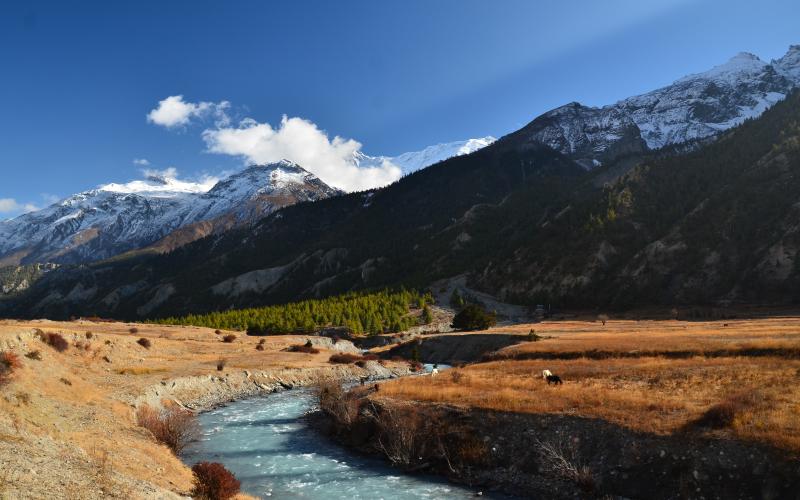Climate in Nepal
- On 30 Jan 2020

A wide range of climatic conditions exists in Nepal, primarily as a result of the altitudinal variation. This is reflected in the contrasting habitats, vegetation, flora, and fauna that exist in the country. Other important climatic factors influencing biodiversity and the distribution of flora and fauna include precipitation, humidity, temperature, and aspect.
Eighty percent of precipitation in Nepal occurs in the form of summer monsoon rains from June through September. Winter rains are more pronounced in the western hills. The average annual rainfall in Nepal is about 1,600 mm, but total precipitation differs in each eco-climatic zone. The eastern region is wetter than the western region. Taplejung (1768m) in the far-eastern Mid Hills receives an average annual rainfall of 2024 mm, whereas Baitadi (1635m) in the far-western region receives only 1037 mm. The southern flanks of the Himalayas, such as Pokhara, receive a higher amount of rainfall (3,345 mm), while the rain shadow areas of Dolpo, Jomsom, and Mustang receive considerably less (295 mm).
Temperature variation within topographic variations is pronounced. The average temperature is indicated to decrease by 6oC for
every 1000m gain in altitude (Jha 1992). Winter temperatures in the Terai are between 22-27oC, while summer temperatures exceed 37oC. In the Mid Hills, temperatures generally remain between 12- 16 C. Human interventions such as deforestation, industrialization, and urbanization have had adverse effects on the country’s climate, and have influenced a pronounced rise in temperature in recent years. Aspect has an important influence on vegetation, particularly at lower altitudes. In general, moisture is retained more on the north and west faces; the south and east faces are drier because of their longer exposure to the sun.
